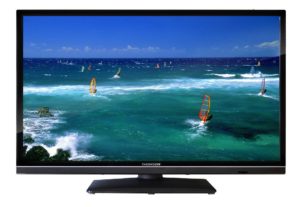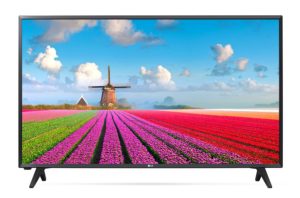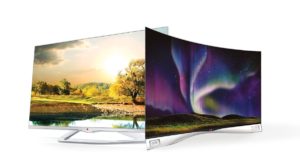What is the difference between LCD and LED TV?
 One of the most frequently asked questions from buyers who want to purchase a TV is the difference between LCD and LED.
One of the most frequently asked questions from buyers who want to purchase a TV is the difference between LCD and LED.
And this makes sense, because at first it seems that they are no different, the products look identical. And when studying the technology, it also turns out that it is the same for both options. A two-plate liquid crystal matrix is used, which distributes light depending on the degree of electrical voltage.
However, if we look at the properties of each device in a little more detail, it turns out that there is still a difference. In order to understand the degree of their significance for yourself, you need to decide on the purpose of purchasing a TV.
The content of the article
Use Cases

If you want to use your TV as a home theater, picture quality will be of utmost importance to you.
Reference. This concept combines the brightness and contrast of colors, picture clarity, support for HD and Full HD formats.
If you are buying a TV as a screen for video games, the ability to connect modern set-top boxes and consoles, as well as the response speed of the matrix, will be more important to you.
For many buyers, the combination of the TV with the overall interior design is of great importance. In this case, they will pay attention to the diagonal, curvature, specularity or matteness and many other visual parameters.
Having decided on your priorities, you can start making your choice. First, let's look at the features of each type.
LCD TVs

They have a longer service life than their kinescope predecessors. They do not flicker, so they do not strain the eyes, they are lightweight, and the screen is protected from dust adhesion.
The design features of such displays are liquid crystals under pressure located between two plates. Under the influence of electric current, they transmit the required color through special filters.
But in order for the image on the screen to become visible, backlighting is needed. The LCD display is characterized by the use of cold cathode lamps, the light from which falls on the entire surface. Therefore, such TVs cannot completely darken any part of the image and lighten another.
LED TVs

Their design also includes liquid crystals. In general, the color rendering technology is the same, but the backlight is completely different.
Reference. LED stands for Light Emitting Diode, that is, a diode that emits light.
Such diodes are located around the entire perimeter of the screen, and each is able to work independently of the other. Thanks to this, certain areas of the screen can be illuminated more and others less. This “deepens” the picture, visually making it more voluminous. The effect occurs because dark tones without backlighting become much darker, and light tones appear even lighter when contrasted.
The difference between LCD TVs and LED devices

Main difference
The only thing in which the devices differ is, as mentioned above, the type of backlight used. In all other respects they are identical, but due to the properties of the backlight, important operational differences can be identified.
Due to the local dimming ability in LED TVs, black colors will be truly black, and not dark gray, as in LCD.
Reference. This technology also has its drawbacks, for example, the presence of a colored halo in contrasting places.
This happens because light from light areas partially reaches dark areas. However, this is almost invisible to the eye.
Other differences
- The cathode lamps of LCD devices operate continuously, while LED diodes only waste electricity in bright areas. Accordingly, the second option is more economical in terms of energy consumption.
- Buyers for whom the design of the TV is important should pay attention to the fact that the use of LED backlight technology has made it possible to produce much thinner models.
- In terms of environmental friendliness, marketers often note that LED displays do not contain mercury, but they do contain gallium and arsenic, so both options cannot be called completely environmentally friendly.
- The main positive difference between LCD devices and LED devices is their lower cost.
Therefore, if the depth of black in the image does not matter to you, you are unlikely to lose anything if you want to save money and buy a TV with an LCD screen.





